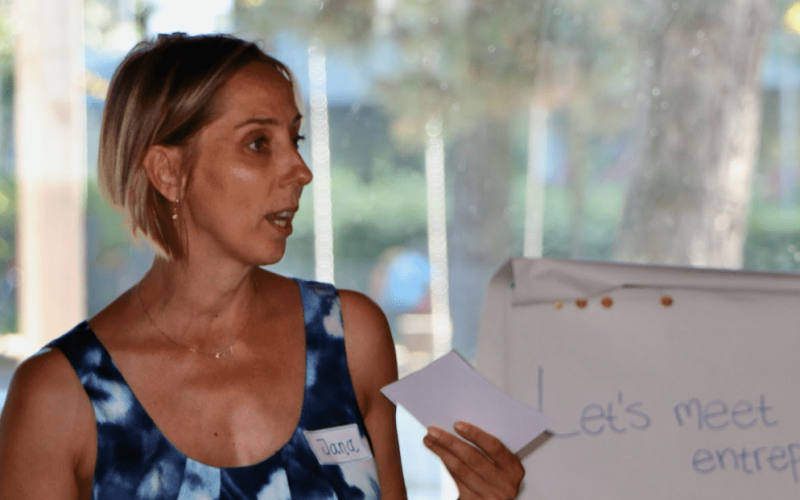Insights from a workshop leader: cofounding the right way with expert Jana Nevrlka
Today meet workshop leader Jana Nevrlka, as she reveals how to successfully build business partnerships that perform well and last; and read more about her story and background since she started to get involved with SINGA in Zurich in 2017.
About Jana
With one successful and one failed cofounding experience behind her, Jana has spent the past five years learning what’s required to build better business partnerships. Now she uses this knowledge to help cofounders across the world to build successful and lasting businesses. Combining her legal and business background with the entrepreneurial experience, she writes and speaks extensively on the subject. She also works as a cofounding expert for a number of startup accelerators, universities and VC’s. In addition, she coordinates the development of dynamic equity split templates in Europe, in direct cooperation with Mike Moyer, author of the “Slicing Pie!”.

When cofounding and setting up a team for your business, what is important to keep in mind?
Step 1: Confirm that partnership is right for you. There is no one size fits all. Before going down the partnership route — check if partnership is the right choice for yourself and your project.
Step 2: Know what you are looking for. The specification of your future cofounder needs to be based on your business plan. Be crystal clear about your motivation. Many failed cofounding teams could be traced to ‘I did not want to do it alone’ motivation.
Step 3: Preselect potential cofounders. Once you know what you are looking for: spread the nets! Usual categories are friends, family, ex-colleagues — and while cofounders found in these pools can work — they do have some inherent increased risks. Plus, there might be other more suitable candidates out there. Act as if you were recruiting your first employee — look wider & keep looking until you find the right one.
Step 4: Dating times. Get to know your potential cofounders: What are their working styles? Personalities? How do you work together? Try before you buy! Very important in this stage is to define the framework — What happens if the person joins your team? What happens if they do not? Do they have any right for compensation? Does that impact the ownership of the intellectual property potentially developed in this time? Make sure you have the conditions clear and understood by all parties and preferably documented in writing.

Step 5: Get serious. In this step you are going to set a foundation of how well (or not) your team will perform. This includes allocation of roles and responsibilities, defining the milestones and KPI’s for individual team members, flagging potential risks and mitigating them, designing the working culture and going through a list of conversations you need to have — aka ‘what happens if?’ …a cofounder leaves, a cofounder gets long-term ill, a cofounder stops performing etc..
Step 6: Split the equity. Potentially, one of the most sensitive and crucial parts of establishing a business partnership. Default equal splits or ‘naked’ equity splits without vesting — are by definition a wrong choice. For a cofounding team to be stable — fairness of the equity split is nr. 1 factor. The discussion about equity should also include, next to equity allocation framework, the equity recovery framework — aka what happens with the equity if a cofounder leaves or stops being an active cofounder!
Step 7: Cofounding agreement. Only now talk legal. Once you have defined the framework which fits your team — it is time to implement it in your cofounding agreement. Do go through the effort to find a lawyer who will help you to draft a cofounding agreement which is clean and simple. If you do not understand any part of it, it is not good enough! Crucial element is to keep it as a living document — make it a Christmas party tradition to look through your cofounding agreement and see if any part is dated and should be updated to reflect the actual reality of your cofounding team.
When did you join SINGA and what do you enjoy the most about working with the SINGApreneurs and the SINGA team?
I joined SINGA in 2017 and I am very honoured and humbled to work with the SINGApreneurs and the SINGA team. What I find the most outstanding about the SINGApreneurs is their strong drive, hunger to learn, kindness and resourcefulness! It is a very enjoyable experience to collaborate together; and it is a process from which I learn a lot too!
“This experience confirms to me the importance and irreplaceability of the value of migrant entrepreneurs to their new communities and countries.”
It is also very inspirational to see how the SINGA team members are skilled and always motivated, and I am impressed how much they can achieve with the resources given and the immense impact they create!

Useful resources to go further:
The Book – Cofounding The Right Way
More Cofounding Resources by Jana
Get in touch with Jana Nevrlka:
You can reach out to Jana though LinkedIn, by email at info@cofounding.info or schedule an intro-chat through her website: https://www.cofounding.info/contact

